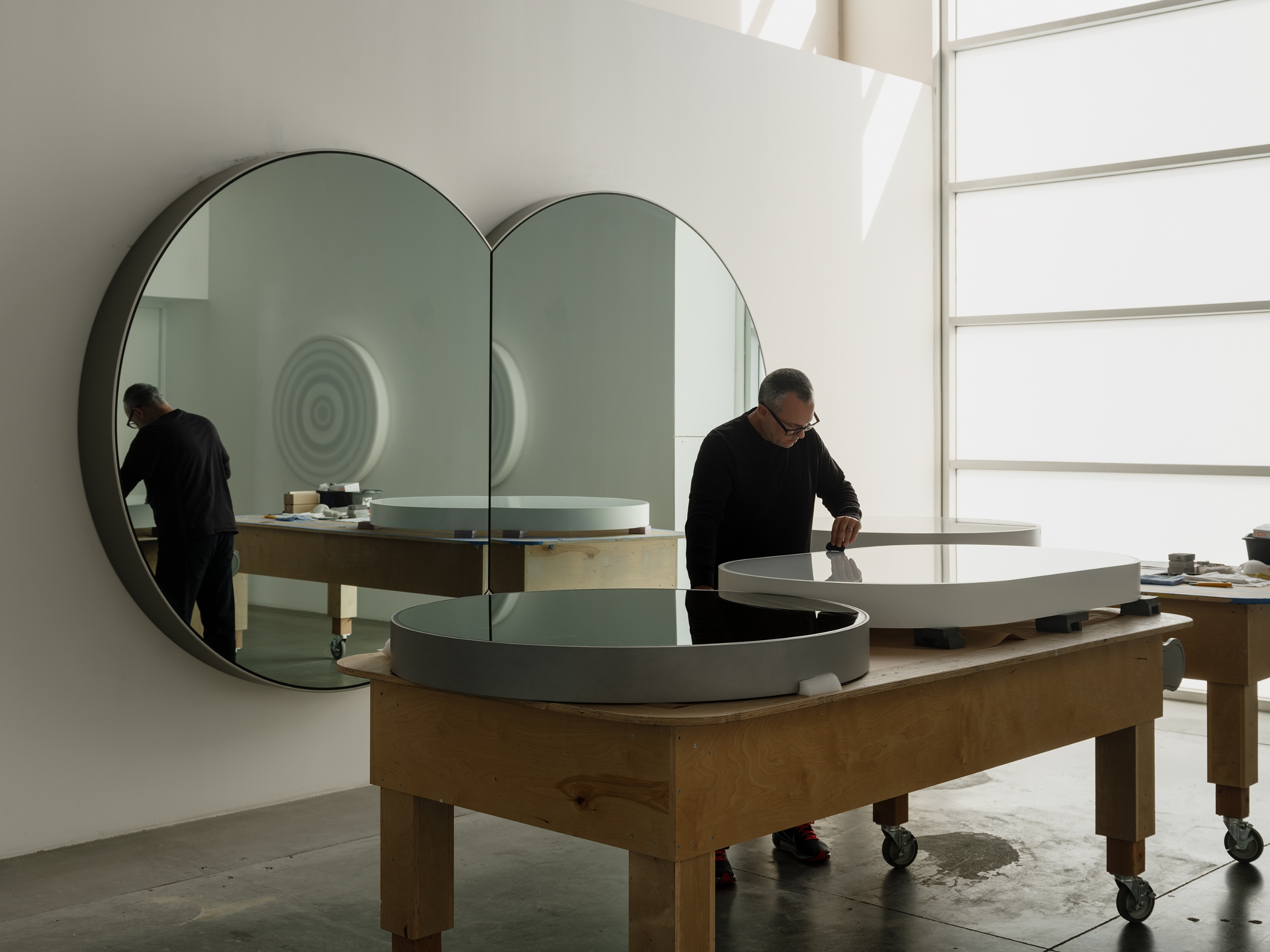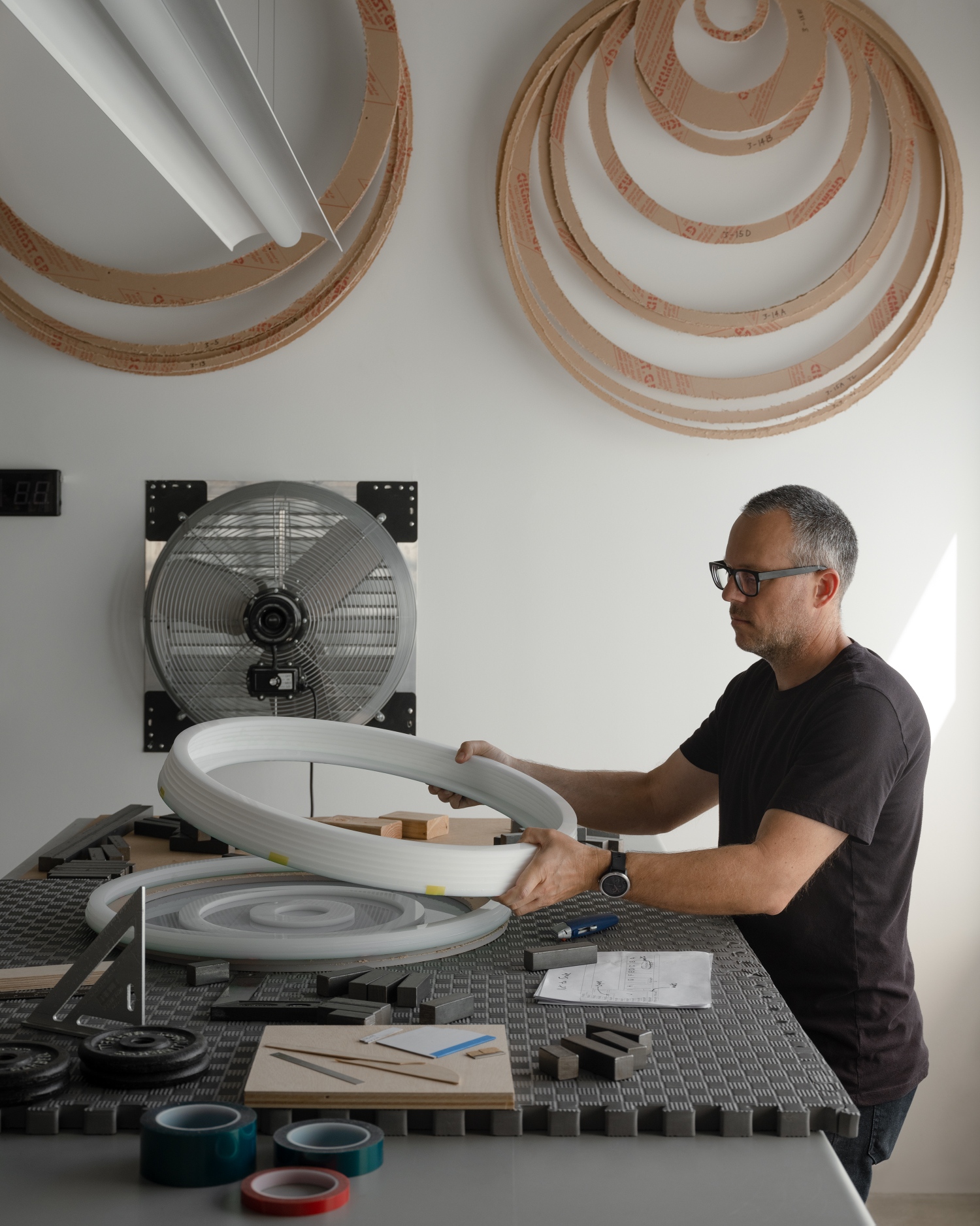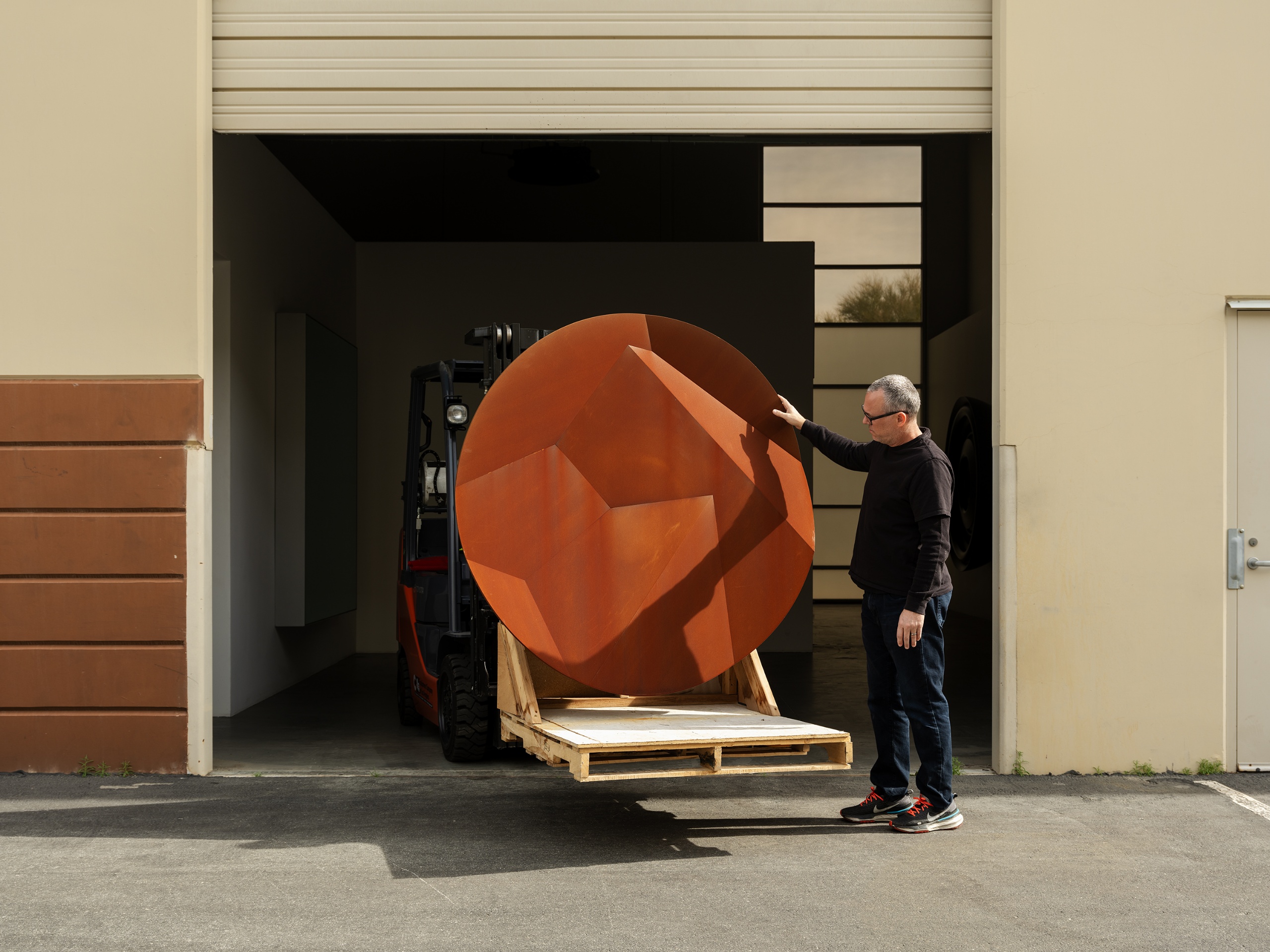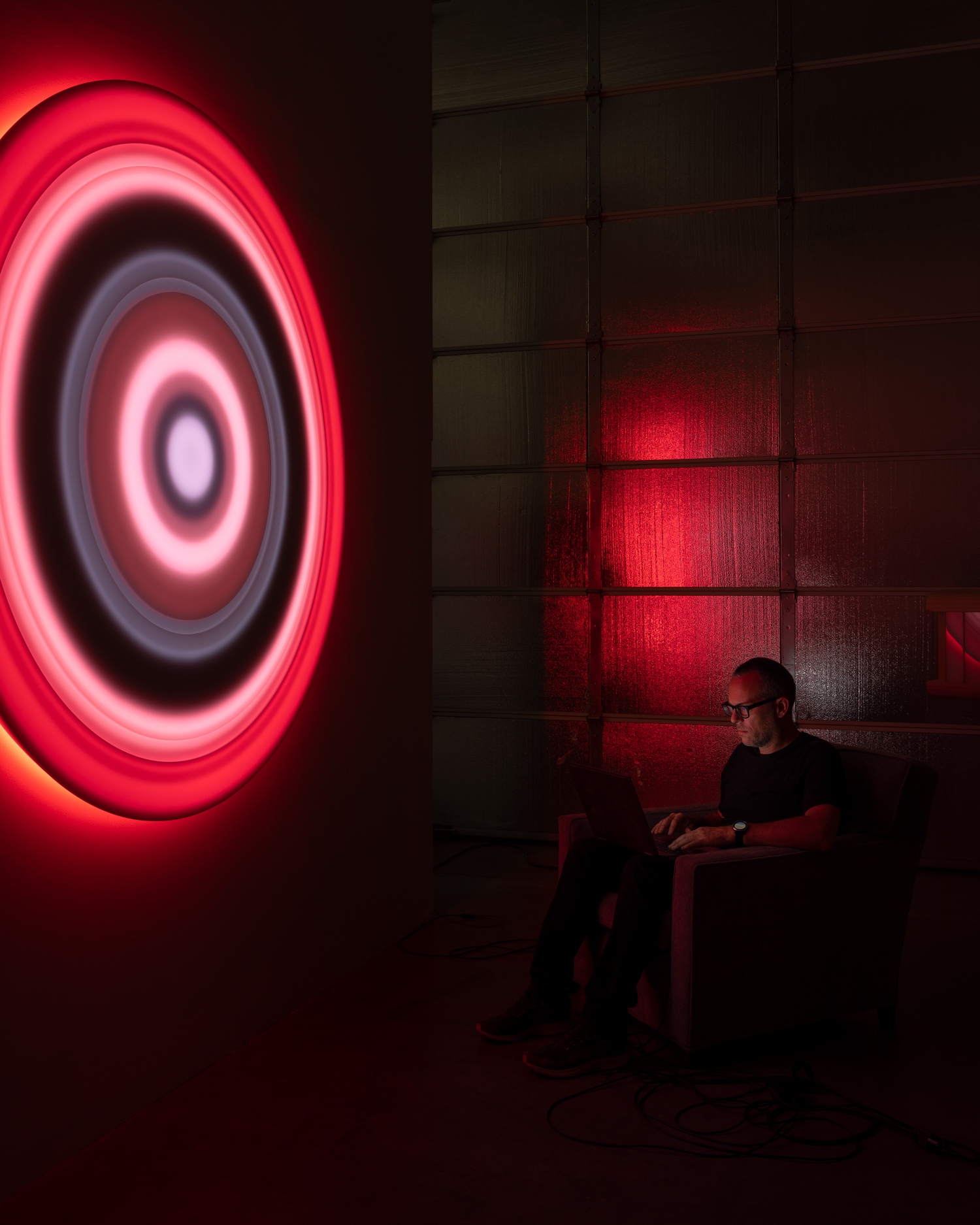

Phillip K. Smith III is known for his immersive works that unite light, color, and form, transforming the spaces we inhabit into meditative environments of reflection and awe. Through his seamless integration of art, architecture, and landscape, he invites viewers to slow down, look closely, and rediscover the quiet beauty of light itself.

Your works often blur the line between sculpture, architecture, and light installation. How do you approach the relationship between built form and the environment when beginning a new project?
Working directly with a specific site is always an opportunity for me to learn, both about myself and the possibilities of that particular place. The light, the atmosphere, the rhythm of movement, and the way one experiences space are some of the elements that define what is possible. While I enjoy creating in my studio, being challenged by a location I would never think to recreate allows me to grow and reach a deeper understanding of my core ideas.

Light and reflection are central to your practice. What draws you to these elements, and how do you see them evolving in your work today?
Light and reflection are central to my artistic practice, transforming everyday experiences into profound encounters. We navigate the world through light, often unconsciously. Yet, in nature, as we witness the shifting colors of a sunrise on the mountaintops or the ephemeral structure of a sunset, this relationship becomes sublime, evoking awe and highlighting our shared humanity. This profound experience of light is what I strive to capture in my art.
Reflection, typically, is experienced as a private act of self-analysis—checking our hair or outfit. But when reflection is brought into the public realm, it becomes surprising, unexpected, and unfamiliar. I utilize reflection in various ways: sometimes to capture the beauty of the surroundings. In this way, I am able to use the beauty of the surrounding landscape or the sky as artistic material. By collaging these elements across a reflective surface, I invite a deeper, more focused gaze allowing us to see the daily beauty around us anew.
Additionally, I use reflection as a dynamic canvas for light. When shifting light interacts with a reflective surface, both color and light itself become visible. The light appears to float, drawing your focus through the color beyond the surface of the artwork or wall. In this way, a reflective canvas allows color to transcend gravity and basic physics, appearing unhinged and ethereal.
Many of your installations change constantly with time and weather. What role does change play in your creative process?
Change is central to my work and to life itself. When people first encounter my work, they often expect it to be static. But when you become aware that the colors shift and the forms appear to breathe or move, you stop to engage. As you connect with the meditative pace of my work, you slow down to truly see and witness what is happening in front of and around you. And, quite often, your experience with the work transforms along with the changing atmosphere and light of the day. What you saw in the morning may not be what you see in the evening.

You’ve mentioned that the choreographing of light sequences is a deeply personal process for you. Can you tell us about that ritual and the chair that’s been with you since your RISD days?
Yes! The chair was plucked from a dumpster in Providence, RI (as one does as a RISD student in need of apartment furniture)! It eventually became my studio chair, and it has stayed with me ever since. Most of my color compositions begin in that chair, with my laptop in hand, as I work closely with the pieces in progress. For site-specific works, I prefer to create directly from the location so that the choreography harmonizes with the environment. My palette always begins with the sky, which contains the most complete expression of lit color we have. I believe that our understanding of color is deeply personal and tied to our memory. Color is intimate. And when we focus on color meditatively shifting, we quietly access deeper areas of our brain.
Every studio carries a certain energy. What’s one detail about yours—a sound, a view, or a daily rhythm—that best captures its spirit?
Joy. My team, my work, and my attitude are dedicated to joy. That’s not a word discussed much in the art world…neither is beauty. But I would say that my studio is dedicated to beauty and joy – a simple, almost primal desire that all of humanity seeks, whether we know it or not. We seek out beauty and joy and, once found, we desire to share it with the people we care about.